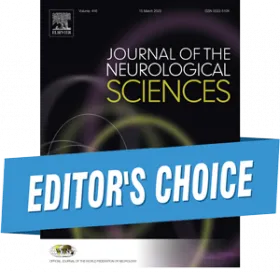Adjunctive middle meningeal artery embolization for chronic subdural hematoma
7 May 2025

Authors: Mohamed Elfil, Hazem S. Ghaith, Ahmed Elmashad, Zaid Najdawi, Mohammad Aladawi, Amro Elrefaei, Vishad Sukul, Merritt Kinon, Uchenna Okafo, John V. Wainwright, Pankajavalli Ramakrishnan, Elie Dancour, Eris Spirollari, Gurmeen Kaur, Stephan Mayer, Chirag D Gandhi, Fawaz Al-Mufti
Editor's Choice
Journal of the Neurological Sciences. REVIEW ARTICLE| VOLUME 472, 123469 May 15, 2025
DOI: https://doi.org/10.1016/j.jns.2025.123469
Highlights
- Chronic Subdural Hematoma (cSDH) is a major neurosurgical problem with high recurrence and mortality.
- We analyzed four clinical trials to assess middle meningeal artery embolization (MMAE) as an adjunctive treatment for cSDH.
- Adjunctive MMAE reduced hematoma recurrence by 44% and mortality by 47% compared to usual care.
- No significant differences were found in functional independence, serious adverse events, or major disabling strokes.
- Further research should refine patient selection and technique to improve outcomes and better establish MMAE’s clinical benefit.
Chronic subdural hematoma (cSDH) is a common and potentially serious condition where blood builds up between the brain and its outer covering, often affecting older adults. Traditional treatment usually involves surgical drainage, but recurrence and mortality rates remain high. This study reviewed data from four clinical trials involving 1,680 patients to assess whether an additional procedure—middle meningeal artery embolization (MMAE)—could improve outcomes when used alongside standard care.
The findings showed that adjunctive MMAE significantly reduced the risk of cSDH coming back by 44% and lowered mortality by 47%, without increasing major risks like stroke or serious complications. However, it didn’t lead to better functional recovery compared to standard treatment alone. The results suggest MMAE is a promising supplement to usual care, but more research is needed to identify which patients benefit most and to refine how the procedure is performed.
Web design by Tribal Systems








